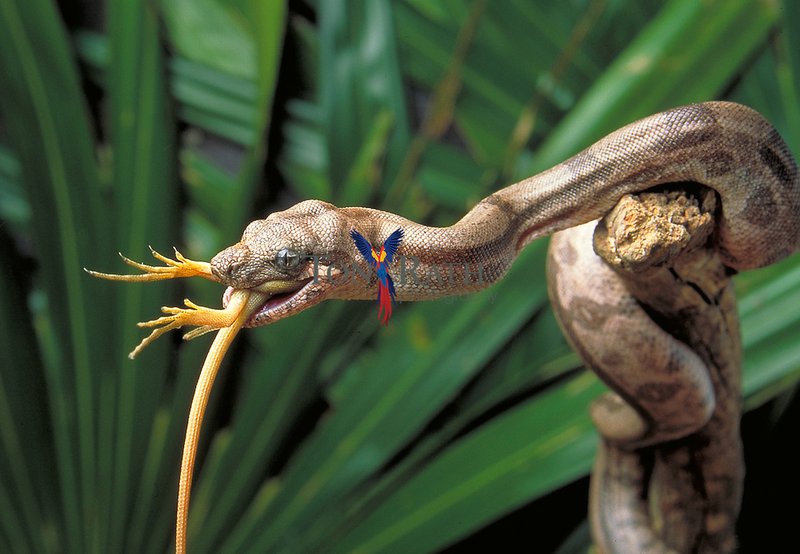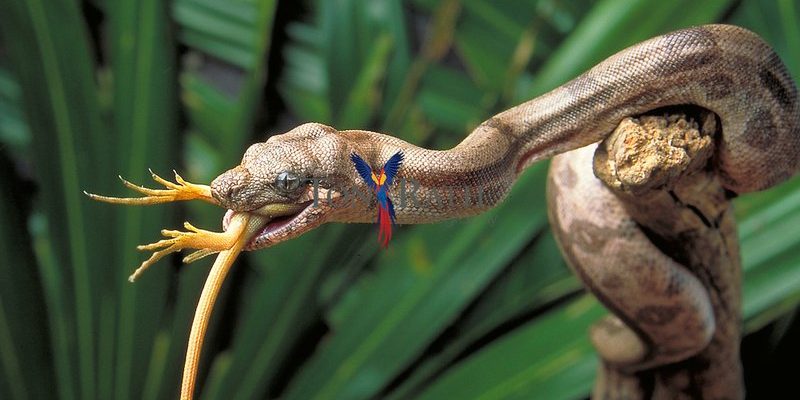
Boa constrictors primarily inhabit rainforests, swamps, and open terrains across Central and South America. Their diet consists of a variety of creatures, ranging from small mammals to birds. So, what exactly does a boa constrictor eat, and how does it go about hunting for its meals? Let’s dive into this amazing world and explore the eating habits and hunting tactics of these incredible snakes.
What Do Boa Constrictors Eat?
Boa constrictors are known for their diverse diet. They are not picky eaters and will consume practically any animal they can overpower. Here’s a closer look at what they typically feast on:
- Mammals: This includes rodents like rats and mice as well as rabbits and even small deer.
- Birds: They often hunt birds in trees, using their agility to strike quickly.
- Reptiles: Smaller reptiles, including lizards, can also be on the menu.
Here’s the thing: boa constrictors are constrictors, which means they kill their prey by wrapping around it and squeezing tightly. This method is not only effective but also quite fascinating. They can consume animals larger than their own head, thanks to their flexible jaws. This adaptation allows them to tackle a wider range of prey, making their diet quite varied.
How Boa Constrictors Hunt
You might be wondering how these large snakes catch their meals. Boa constrictors are not the fastest predators, but they are excellent ambush hunters. They often rely on their camouflage and patience. Here’s how it goes:
1. Spotting Prey: A boa will find a spot where their color blends into the environment. It’s like they’re wearing a natural camouflage suit. They might lie still for hours, waiting for unsuspecting prey to wander by.
2. The Strike: Once they spot something edible, they can strike with remarkable speed. They use their powerful bodies to wrap around the prey, constricting tightly until the animal can no longer breathe. It’s a bit like a hug, but one that ends in a meal!
3. Swallowing: After they’ve subdued their prey, boa constrictors will swallow it whole. Their skulls are unique, allowing them to stretch their mouths wide. It’s like having a built-in elastic band!
This hunting strategy makes boas effective predators in their environment, allowing them to thrive across various habitats.
Feeding Frequency and Digestion
After a big meal, you might think a boa constrictor is done for a while, and you’d be right! They don’t hunt daily, opting instead for a more leisurely approach to eating. Here’s what you should know about their feeding habits:
– Feeding Schedule: Depending on the size of the meal, boas can eat anywhere from once a week to once every few weeks. A large meal—like a rabbit—might keep them satisfied for weeks!
– Digestion: Boa constrictors digest their food slowly, sometimes taking several days to fully process their meal. During this time, they become less active, conserving energy as they break down their food.
– Temperature Regulation: As ectothermic creatures, boa constrictors rely on external warmth to aid digestion. So, if they’re in a cooler environment, they may take longer to digest their meal.
This slow and steady approach works well for these snakes, allowing them to extend the time between hunts.
Boa Constrictor Behavior in Hunting
Understanding how a boa constrictor behaves while hunting can give us great insights into its lifestyle. Here are a few notable behaviors:
– Stealth and Patience: They can be incredibly patient. When hunting, they might remain motionless for hours, waiting for the right moment to strike. It’s like waiting for the perfect wave to surf.
– Tracking and Sensing: Boas have a keen sense of smell and can detect the scents of potential prey in the air. Their specialized tongues work like a radar, helping them pinpoint where their next meal might be.
– Post-Hunt Strategy: After a successful hunt, boa constrictors often find a safe, secluded location to eat. This keeps them out of sight from potential threats while they enjoy their hard-earned meal.
These behaviors make boas fascinating not just as predators but as creatures that have adapted beautifully to their environment.
Common Myths About Boa Constrictors
There are plenty of myths surrounding boa constrictors and their eating habits. Let’s clear up a few:
– Are they dangerous to humans?: While boa constrictors can be large and strong, they are generally not a threat to humans. They prefer to avoid encounters and will only strike if they feel threatened.
– Do they kill their prey just for fun?: No. They hunt out of necessity, and their constricting method is a means of survival, not sport.
– Can they eat anything?: While they can eat a wide range of prey, larger animals pose a risk of injury. Boas are selective based on their size and capabilities.
Understanding these myths not only helps in appreciating these creatures but also highlights the importance of respecting their role in the ecosystem.
In the grand tapestry of nature, boa constrictors are remarkable predatory artists. They balance their diet and hunting techniques with a graceful stealth that’s truly impressive. From their diverse menu to their unique hunting methods, every aspect of their eating habits tells a story of adaptation and survival.
So the next time you hear about a boa constrictor, remember it’s not just a snake—it’s a master of its domain, blending its way through the wild as it searches for the next meal. Let’s celebrate these incredible creatures for their role in nature and the fascinating ways they thrive!

